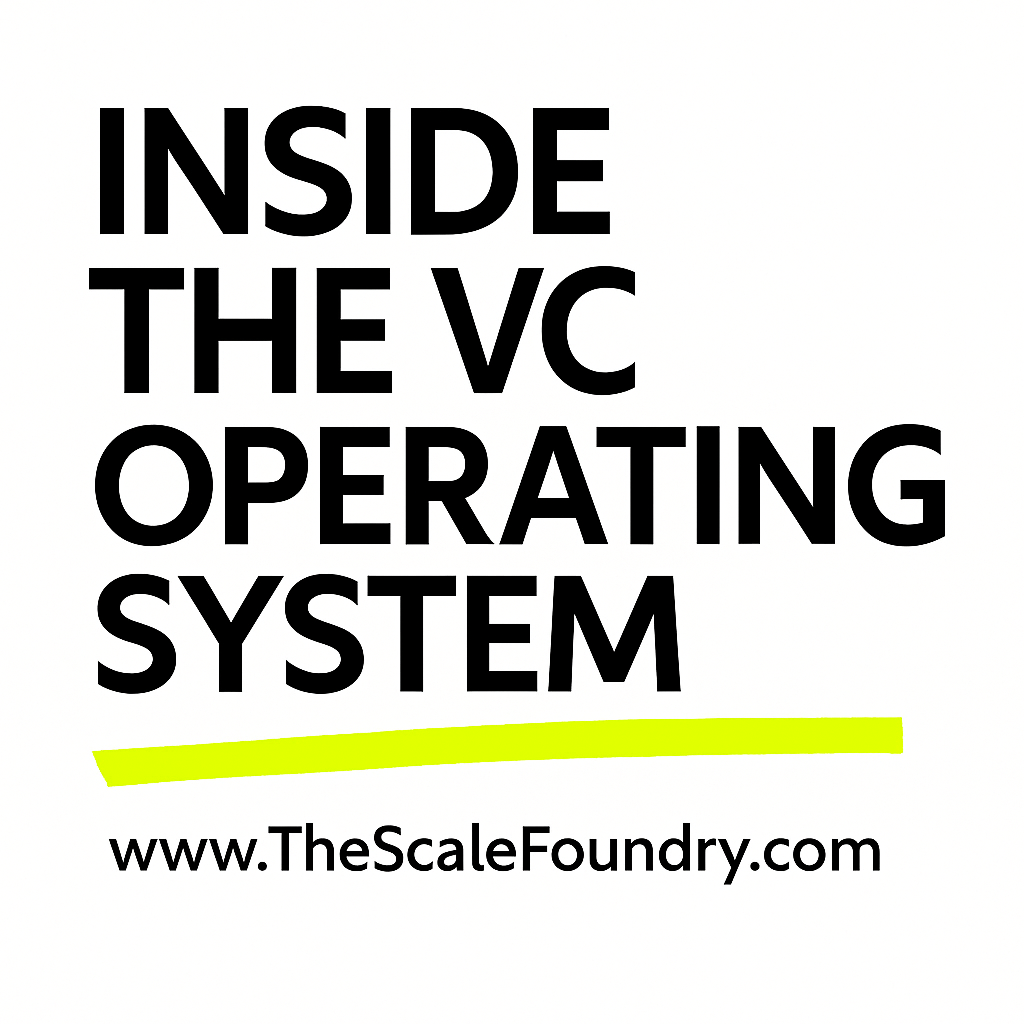VC Strategy
Inside the VC Operating System: What Founders Need to Know
Great ideas don’t get funded—great narratives, timing, and internal champions do. Here’s how venture capital firms really operate behind the scenes—and what that means for your next pitch.
Inside the VC Operating System: What Founders Need to Know
If you’re a founder raising capital, it’s not enough to have a great pitch.
You need to understand how the venture capital machine actually works behind closed doors.
Because here’s the truth:
VCs don’t just invest in products. They allocate time, conviction, and political capital inside a fund structure governed by internal dynamics you’ll never see unless you’ve sat in those rooms.
So let’s pull back the curtain.
What Actually Happens Inside a VC Firm?
1. Partners Hold the Power
Associates and analysts can open doors—but they can’t write checks. Their job is to scout signal, not make decisions. Your job as a founder? Impress them enough to get passed up the ladder—but never stop there.
2. Monday Meetings Are Everything
Every VC firm has a weekly internal meeting, usually Monday morning. This is the battleground where deals live or die. If your startup doesn’t get brought up—or doesn’t get defended—it stalls. Fast.
3. Conviction Is Currency
For you to get a “yes,” at least one partner must champion your deal. That means they’ll need to fight for you inside the firm, defend your valuation, and put their reputation on the line. Make their job easy.
4. LP Pressure Is Real
Even the biggest VCs have bosses: their Limited Partners (LPs). These institutional investors want returns on a defined timeline. That pressure shapes what kinds of companies the firm backs, how long they’ll stay patient, and when exits are pushed.
So What Should Founders Actually Do Differently?
If you want to survive this system, your pitch must do two things:
1. Make internal advocacy easy.
Give your contact—whether it’s an associate or partner—a crystal-clear narrative they can repeat in your absence.
Think:
→ “They’ve de-risked 3 major milestones post-Seed.”
→ “They’re first to market in an underfunded category with a validated pilot.”
2. Create urgency around timing.
VCs are always balancing opportunity with risk. You have to answer: Why now? Why is this the moment to bet on this problem, this solution, and this team?
Because inside the VC operating system, you’re not just pitching for capital.
You’re pitching for belief.
And belief requires clarity, urgency, and confidence.
Founder Reality Check:
Ever had a pitch go great—but never hear back?
That deal probably died in the partner meeting.
Your job isn’t just to impress in the Zoom call.
It’s to arm your champion with the narrative, data, and momentum they need to win the room.
Final Thought:
The VC operating system isn’t designed to be transparent.
But the founders who understand how it works—and structure their pitch accordingly—stand a far better chance of getting to yes.
Ready to Decode the VC OS and Raise Smarter?
Join The Scale Foundry’s Pitch Masterclass where we teach founders how to:
→ Lead the fundraising narrative
→ Build decks that convert inside partner rooms
→ Anticipate investor psychology and internal dynamics
